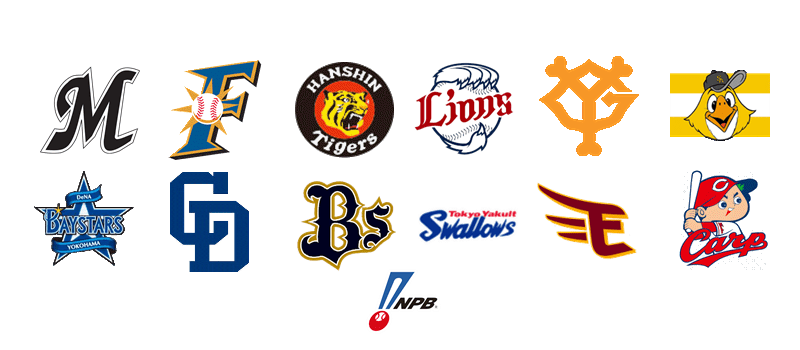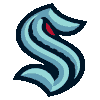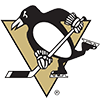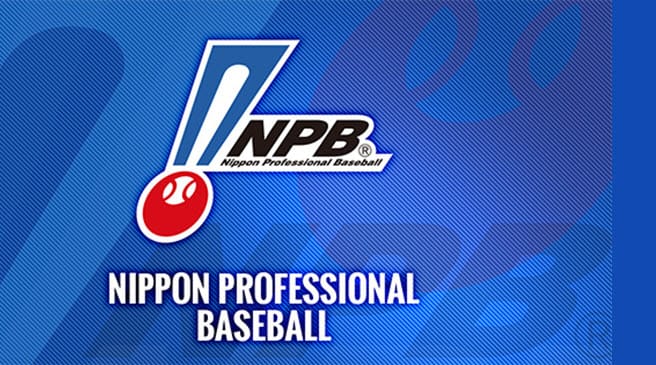Welcome to the first edition of RotoWire's NPB DFS article!
While we wait for baseball to resume on this side of the ocean, the second-best league in the world is about to begin play in Japan. We'll have daily cheat sheets for contests run on DraftKings. These contests take a slightly different form than DraftKings' MLB and KBO offerings. Rather than selecting a full lineup, you'll pick one pitcher, two infielders -- including catchers -- two outfielders and two utility hitters. Scoring will be the same as what you're used to in DraftKings' MLB and KBO games.
Here are a few things to know before jumping into your first NPB contest:
- The NPB consists of 12 teams, split into two leagues, the Central League and Pacific League.
- The Pacific League uses the designated hitter, but the Central League does not.
- Teams typically play 143 games but will play just 125 this year, with the 18-game interleague schedule being eliminated to account for the difference.
- The top three teams in each league reach the playoffs, with the second and third teams playing a three-game series for the right to face the regular-season winners in a seven-game series.
- The winners of each league's playoffs meet in a seven-game championship series known as the Japan Series.
- The Pacific League's Fukuoka SoftBank Hawks have won three straight Japan series and five of the last six, sweeping the Yomiuri Giants last season.
- As with the KBO, NPB teams are limited in the number of foreign players allowed on their roster, though they're allowed up to four, including no more than three hitters and no more than three pitchers. NPB teams can carry an unlimited number of foreigners in the minor leagues.
- Notable statistical differences between NPB and MLB include runs per game (4.26 vs. 4.83), ERA (3.90 vs. 4.49), slugging percentage (.392 vs. .435), strikeout rate (19.9 percent vs. 23.0 percent) and home run rate (1.0 vs. 1.4).
With all that out of the way, on to the recommendations for Friday's NPB Opening Day slate.
Pitchers
Tomoyuki Sugano ($10,600) recorded an ERA of 2.33 or below for five straight seasons from 2014 to 2018 and was considered a potential candidate to attempt the jump to MLB. He had a bit of a down season last year, as his ERA rose to a career-worst 3.89, though his combination of a 20.8 percent strikeout rate and a 5.5 percent walk rate was still quite good. He struggled with the long ball, giving up 1.3 HR/9, more than double his career mark of 0.6, but that's the sort of statistic that tends to vary from year to year. He has perhaps the easiest matchup of the day Friday, as he'll face a Tigers team which ranked last in scoring in 2019, managing just 3.76 runs per game.
Takahiro Norimoto ($11,700) has quite an easy matchup as well, as he'll face a Buffaloes side which finished second-last in scoring at just 3.80 runs per game. The righty was limited to just 12 starts last season after undergoing elbow cleanup surgery in March, but he looked quite good upon his return. He struck out a strong 24.9 percent of batters while walking just 3.7 percent, an impressive combination which helped him to a 2.78 ERA. That strikeout upside against a weak lineup makes him a strong play here.
The highest-upside pitcher on Friday's slate, Shota Imanaga ($15,000) is also the most expensive. The lefty struck out 27.2 percent of opposing batters last season while walking 8.2 percent. His 2.91 ERA was a dramatic improvement from his awful 6.80 mark in 2018 but was right in line with his 2.93 and 2.98 ERAs in his first two seasons in the league. He'll face a relatively easy matchup in his first start of the 2020 campaign against a Carp offense which ranked seventh out of 12 in runs per game last year.
Top Targets
Swallows second baseman Tetsuto Yamada ($6,500) is an excellent all-around talent and has been one of the better players in NPB for the past several seasons. He hit 35 homers while stealing 33 bases last season, his fourth 30-30 season in the last five years. He hits for average as well, posting a solid .271 batting average last season but clearing the .300 mark five times in his eight-year career. He'll be a key part of a Swallows lineup which ranked third in scoring last season.
Neftali Soto ($6,700) did very little in 34 games for the MLB's Cincinnati Reds back in 2013 and 2014, but he's been a star in his two seasons in Japan. He's cleared the 40-homer threshold in both campaigns, tying for the league lead with 43 bombs last season. He saw his batting average dip to a still-solid .269 last season, but he has plenty of upside in that category, as he hit .310 in 2018. He'll have a good shot to hit one out on Opening Day against Carp starter Daichi Ohsera, who gave up an above-average 1.1 HR/9 last season.
Bargain Bats
Yuki Yanagita ($5,500) is quite cheap for a hitter of his talents, likely a product of the knee injury that limited him to just 38 games last season. He hit an excellent .289/.420/.516 in those games, though his strong .936 OPS was actually his lowest mark since 2014. The 31-year-old outfielder owns a lifetime .319/.422/.546 mark over his nine-year NPB career and hit 36 homers while stealing 21 bases in his most recent full season in 2018. He'll get the platoon advantage against Marines righty Ayumu Ishikawa, whose 3.64 ERA last season is one of the highest marks among the Opening Day starters.
Jerry Sands ($4,200) looks like a potential steal, though he's an unknown at the NPB level. He hit an unimpressive .238/.303/.367 in parts of five big-league seasons for the Dodgers, Rays, Indians and White Sox, but he's made a name for himself across the Pacific. He's spent the last two seasons with the KBO's Kiwoom Heroes, hitting .306/.391/.574 with 40 homers in 164 games. Japanese baseball is a step up from the KBO, but he has room to fall a fair amount from those numbers while still being a strong option given his low price.
Stacks To Consider
Marines vs. Nao Higashihama: Brandon Laird ($6,300), Takashi Ogino ($6,700), Leonys Martin ($4,800)
The Hawks may be the three-time defending champions, but they'll open the 2020 campaign with one of the shakier starting pitchers on the slate. Higashihama has had plenty of success in the past, posting a 3.32 ERA over the course of his seven-year career, but he didn't live up to his usual standards last season. In seven starts before undergoing season-ending elbow surgery in early June, he struggled to a 6.37 ERA, striking out just 16.5 percent of opposing batters while walking 14.6 percent. While the veteran righty could certainly bounce back to his previously high standards this season, his performance and injury issues last season make him the most interesting stack target on the slate.
Former big-leaguer Laird didn't have much MLB success in 53 games in the early 2010s, hitting just .197/.255/.370, but he's carved out a solid five-year career as a slugger in Japan, hitting an average of 32.6 homers per season. He managed 32 bombs last year, his first with the Marines, while hitting .248/.333/.483. He's never hit for average on either side of the Pacific, but he's as good a bet as anyone to clear the fence Friday.
Veteran leadoff man Ogino hit a strong .315/.371/.470 last season, his best full-season marks in all three categories. He doesn't hit for much power, though his 10 homers last season represented a career high. He also chips in with his legs, stealing 20 or more bases in three straight seasons and swiping a career-high 28 bags last year.
Left-handed outfielder Martin will get the platoon advantage against Higashihama. The nine-year MLB veteran endured a rough stretch at the tail end of his stateside career, battling a life-threatening infection in late 2018 and returning to hit just .199/.276/.343 in 65 games for Cleveland last year before joining the Marines midseason. He posted some promising numbers in a small sample of 52 NPB games, hitting .232/.342/.495 with 14 homers, a total that would translate to 38.5 long bombs over a 143-game season. That power potential at a fairly cheap price makes him a promising option here.
Dragons vs. Masanori Ishikawa: Dayan Viciedo ($6,400), Zoilo Almonte ($4,100), Nobumasa Fukuda ($4,600)
The Swallows allowed the most runs in the league last season and were the lone team to allow more than five runs per game, as their 5.17 mark came in 0.9 runs per game higher than any other team in the Central League. It's no surprise, then, that their Opening Day starter, Ishikawa, is one of the least impressive arms on the slate. The 40-year-old southpaw had some success early in his career but is long past his prime. His 3.84 ERA was his best mark since 2015 but was barely better than league average, and his low 17.1 percent strikeout rate suggests he won't give Dragons hitters too much trouble in this one.
Viciedo spent parts of five seasons with the MLB's Chicago White Sox in the early 2010s, posting a 96 wRC+ on the back of a .254/.298/.424 while hitting as many as 25 homers in 2012. His roughly average bat wasn't enough for a player limited defensively to the corners at the MLB level, but it's been more than enough over his four-year career in Japan. He owns a .303/.372/.502 lifetime mark in NPB and hit a strong .315/.374/.496 last season, launching 18 homers while driving in 93 runs.
Almonte didn't do much in 47 games for the Yankees in 2013 and 2014 but has emerged as an excellent contact hitter in his two seasons in Japan, hitting .323/.372/.491. He led Dragons regulars with a 329 batting average last season. He has respectable power as well, hitting seven homers in just 49 games last year. It's a strong package for a rather cheap price against an unimposing lefty.
Fukuda tied Viciedo for the team lead with 18 homers last season but did so in just 105 games to Viciedo's 143. That tied the veteran's career-best mark in that category in a season in which he set personal bests in all three elements of his .287/.358/.519 slash line. It's unclear if he'll hold onto those gains as he heads into his age-32 season, but it will be relatively inexpensive to find out in this one.































